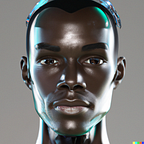How Apple Created Today’s Microsoft
Apple declared war. We all remember the thermonuclear warfare that Steve Jobs declared on Android; but it isn’t the nation on which we openly declare war that we always end up fighting. For years Microsoft relied heavily on the sale of software to sustain growth, while Apple carved out a unique niche with their signature, end-to-end experience. Both could exist in relative harmony until Apple rang the death knell in 2013. Operating systems would be free forever and always.
This was a huge problem for Microsoft; however, they had already been in the process of pivoting into web services, like Axure, and hardware, like the Xbox. But creative destruction is a lot easier to swallow when you’re not having that pill shoved down your throat. Ballmer must’ve seen the end coming, because he quit shortly before the announcement.
But on February 14, 2014, Microsoft made the most impactful decision the company has made to date and brought Satya Nadella to the helm of the ship. Equally as impactful, and somewhat overshadowed, Bill Gates recommitted to the company as Founder and Technology Advisor, pledging to dedicate more time and resources to supporting the CEO of the company. With the scene set for a revolutionary resurgence, Apple stood at a crossroads of following the plan of their legendary founder, a man notorious for changing his mind, or maintaining his vision and following the path of groundbreaking innovation.
I’m not sure that Apple chose either. They quickly forgot the importance of creating compelling software and focused on hardware as a new core competency. In short, they focused on where the profit was. There was profit in services and hardware, so a lot of time and investment went into making it really easy to purchase things and packing these mobile stores in sleek packages. Note the innovations that Apple has made following the death of Jobs primarily stems from new methods of purchasing new things and sleek hardware that serves a primarily proprietary function. iTunes, Apple Music, Apple Pay, App Store, iMessage Store…these things have been updated, but little love has been shown to things outside of that profitable ecosystem. Such tremendous focus has been placed on things that are profitable for Apple, that they didn’t think about the things that made them prodigally Apple. The market was willing to spend obscene amounts of money on new screens, because Apple was willing to spend obscene amounts of money on creating new screens.
Microsoft moved decidedly in the opposite direction. They put their heads down and focused tirelessly on creating the Hololens, bringing their Xbox hardware across into a new personal computing division, and rethinking the opportunity for seamlessness across their devices and services. They quickly trimmed the fat of a failed Nokia acquisition, doubled down on Skype, and did some true soul searching. The halfhearted attempt at catching up to the iPad, dubbed the Surface, was reimagined as a MacBook competitor, making the Air a lackluster alternative. Whereas the less than compelling Apple keynote went to great lengths to excite an unenthused audience, Microsoft Build 2014 unified the phone and desktop operating systems and debuted Cortana on the desktop. This was a keynote plagued with bugs, but there was genuine excitement around the announcements. There was 3rd party app integration for Cortana, something Apple is just now catching up to, and was rolled out as a beta — another thing Apple has just recently caught up to doing with the public.
As Apple became enflamed with their Samsung duel, Microsoft stepped in and took care of the niche of desktop creatives that Apple had long been neglecting. In mastering this hardware, they made great strides in unifying their services, while making them platform agnostic, and slowly infiltrated Apple, remaining the ubiquitous office software we’ve come to know and love. As Apple’s suite of professional software became stagnant, Microsoft continued to silently remind Apple loyalists of their progress through making Office increasingly easy to use. This worked in grand juxtaposition to the decaying suite of professional editing software Apple had won over creatives with, in addition to an Excel alternative that could barely perform basic math functions.
On October 26, 2016, Microsoft announced their unified vision of the future of computing. It merges the digital and physical world, puts the human first, and reveals an incredible comeback story for a written off brand.
With Bing powering Siri, Office dominating Apple’s desktop and mobile OS, and Xbox quietly amassing a younger audience, Microsoft took off the kitten paws and roared today. It’s only fitting that the sleeping lioness would unsheathe her claws following the final nail in the coffin of her adversaries Big Cat operating system.
Thank you, Apple, for making this Microsoft possible. Thank you for shaking up the industry. Thank you for being unpredictable in the best ways over the past 40 years.
Thank you Microsoft for bringing excitement back to a stagnant industry.
